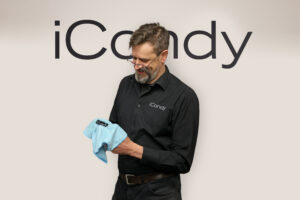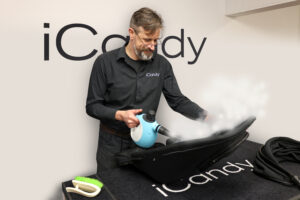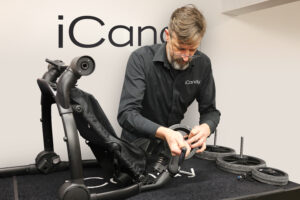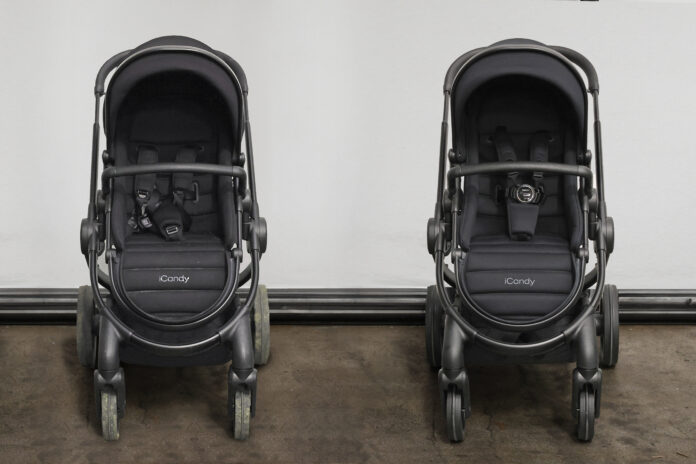Pushchair Experts Reveal How To Remove Winter Dirt, Stains and Mould From Your Pram
● Pushchair engineers say prams should be cleaned at least once a month and regular cleaning can make your pushchair last for years longer
● The experts reveal some common household cleaners such as bleach, should be avoided though as they can actually cause long-term damage to your pushchair
● iCandy has created a step-by-step cleaning guide for parents and carers looking to give their prams a deep clean after winter
Pushchair engineers at iCandy say regular cleaning can prolong the life of your pram by years, but research suggests many parents are unsure about the best products to use and the best ways to remove things like mould and stains.
‘How to clean a pushchair’* was Googled almost 20,000 times in the last 12 months and mould is one of the top stains people want help with the most.

Head of Product Management at iCandy, Mark Bradbury, commented: “In winter, pushchairs can take quite a beating – cold and windy weather, along with mud, snow and rain can lead to clogged wheels and breaks, damp, dirty and mouldy fabrics, and that’s before you’ve tackled the accumulation of crumbs from snacks and on-the-go eating!”
“When it comes to the best way to tackle stains and clean your pram after winter, some common household cleaners can actually do more harm than good though, so we wanted to create a step-by-step guide that shows the best ways to keep your pram looking, and functioning, as good as new.” Continued Mark
To help UK parents get rid of stains, odours and even mould, the pushchair experts shared their top tips on how to deep clean your pram this spring.
The Cleaning Products You Should And Shouldn’t Use
Mark explains “Cleaning your pram can easily be done at home using a variety of products you’re likely to already have in the cupboards. However, it’s important to avoid using harsh chemicals, products that contain bleach, or abrasive cleaners on your pushchair, as they can damage the fabric, frame, and other components.”

How To Deep Clean Your Pushchair
ICandy’s five-stage cleaning guide provides tips on how to clean the fabrics, frame and wheels of your pushchair.
Stage 1: Removing dirt from fabrics
1. Use a soft-bristled brush to gently loosen any dried mud or debris from the fabric and crevices of the pushchair.
2. Vacuum the pushchair thoroughly to remove loose dirt, crumbs, and dust from all surfaces, including the seat, canopy, and basket.

Stage 2: Tackling stains
1. Prepare a gentle cleaning solution using warm water and mild baby-safe detergent or a mixture of vinegar and water (1:1 ratio) in a spray bottle.
2. Test the cleaning solution on a small, inconspicuous area of the pushchair to ensure it does not cause discolouration or damage.
3. Spray the solution onto stained or soiled areas of the pushchair and gently scrub with a soft-bristled brush or clean cloth.
4. Rinse the cleaned areas with a damp cloth to remove any remaining soap residue.
5. Allow the pushchair to air dry completely before use.
Stage 3: Mould and mildew removal
“Prams can accumulate mould and mildew, especially if they are stored in damp or humid environments – this is a common issue, particularly in areas with high humidity levels. Mould and mildew not only look unsightly but can also pose health risks, so proper cleaning and drying techniques are essential to prevent mould growth and eliminate existing mould from the pram.” Explains Mark
1. If mould is present on any part of the pushchair, mix equal parts of water and white vinegar in a spray bottle.
2. Spray the affected areas generously with the solution and allow it to sit for 10-15 minutes to penetrate the mould.
3. Scrub the mouldy areas with a soft brush or sponge until the mould is completely removed.
4. Rinse the cleaned areas thoroughly with water and wipe dry with a clean cloth.
5. For stubborn mould stains, consider using a specialised anti-bacterial mould remover product recommended for use on baby products, following the manufacturer’s instructions carefully.
Stage 4: Cleaning the frame
1. For aluminium frames, use a mild detergent or soap with water and a soft cloth to wipe away dirt and grime. Avoid abrasive cleaners that may scratch the surface.
2. For plastic components, a gentle cleanser or baby wipes can work well.
3. Steel components may need a bit more attention to prevent rust; use a rust-inhibiting cleaner and ensure thorough drying after cleaning.
4. Pay attention to corners, joints, and crevices where dirt can accumulate. Utilise small brushes or cotton swabs dipped in soapy water to reach these areas effectively. A toothbrush can also be handy for scrubbing hard-to-reach spots.
5. After cleaning, rinse the frame with clean water to remove any remaining soap residue. Ensure the frame is completely dry before reassembly to prevent water damage or corrosion. A soft, dry cloth can help speed up the drying process, especially in areas where water may pool.
Stage 5: Wheel maintenance
1. Use a mild detergent or cleaner and water to wash the wheels thoroughly, removing any dirt, mud, or grime. A stiff brush or sponge can help dislodge stubborn debris. Pay particular attention to the tread pattern and any grooves where dirt may accumulate.
2. Depending on the design of the pushchair, the wheel mechanisms may require occasional lubrication to maintain smooth operation. Oil-based lubricants can cause dirt and debris to build up so use a dry lubricant, such as silicone, where possible.
3. If debris becomes stuck within the wheel mechanisms, such as stones or twigs, carefully remove them using tweezers or a small tool to avoid damaging the mechanism. Ensure the wheels are completely clear before use to prevent issues with manoeuvrability.
4. After cleaning, rinse the wheels with clean water to remove any remaining soap residue. Ensure the wheels and mechanism is completely dry to prevent water damage or corrosion. A soft, dry cloth can help speed up the drying process, especially in areas where water may pool.
How Often Should You Clean Your Pushchair?
Mark suggests “at least once a month or more frequently if it’s exposed to severe weather conditions or very muddy terrain. Regular cleaning helps to prevent the buildup of dirt, stains and mould and can help to preserve the appearance and functionality of your pushchair. If you live in a coastal area then regular wiping down of exposed metal areas and drying off, will help prevent the start of corrosion or rust in metal parts.”
Mark says, “One of the best ways to ensure your pram looks and functions at its best is to make sure you never fod it away and store it when it’s wet. This is one of the quickest ways for mould to develop. If the pushchair gets wet when you’re out and about, make sure you unfold it fully when you get home again, and allow the fabric to completely dry before folding it and storing it again.”
If you’re dealing with a particularly troublesome stain or cleaning issue, iCandy has also launched a new deep clean and MOT service, which can be a great way to give your iCandy pushchair a fresh lease of life. The team’s dedicated cleaning service ensures your pushchair is looking its best, an example of their cleaning process can be seen on their recent YouTube video.
The iService is performed by dedicated technicians and they also perform essential safety checks on things including the brakes, the harness and the locking mechanisms – perfect for ensuring it’s in full working order for the months and years ahead.
Credit to https://www.icandyworld.com/pushchairs who provided the above article/
Help keep news FREE for our readers
Supporting your local community newspaper/online news outlet is crucial now more than ever. If you believe in independent journalism, then consider making a valuable contribution by making a one-time or monthly donation. We operate in rural areas where providing unbiased news can be challenging. Read More About Supporting The West Wales Chronicle























